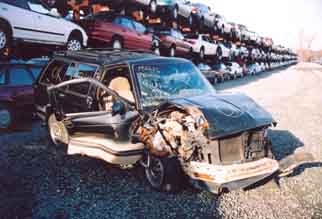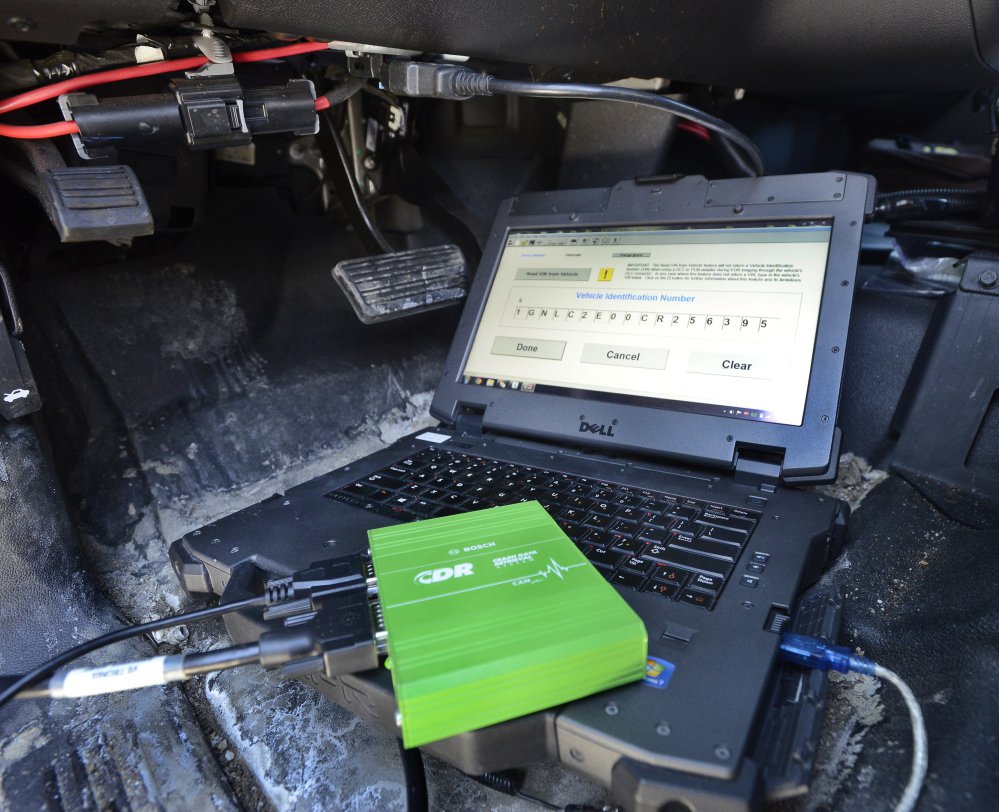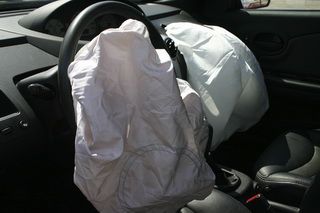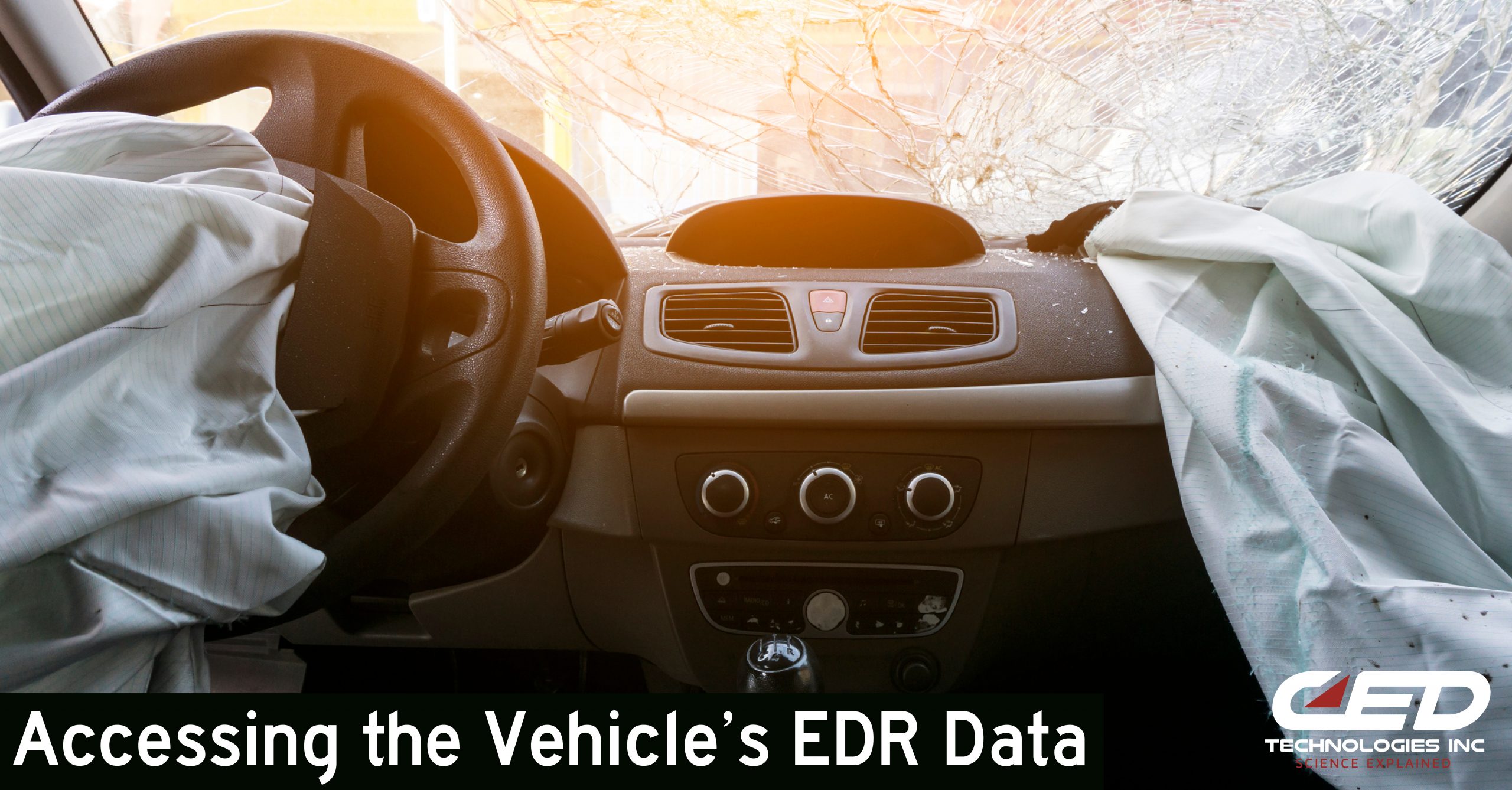Most people think airplanes are the only form of transportation that contain a “blackbox” recorder so if an aircraft crash occurs investigators will have a complete picture of the events and data leading up to the crash. However, as early as the late 1970s the automobile industry has utilized electronic control modules to control and monitor numerous vehicle systems. These modules have had a secondary function to record data in an Event Data Recorder (EDR) that would permit engineers to refine the control functions of the modules. As control module technology has progressed, so has the secondary EDR function.
In the mid 1990s, GM provided access to the Airbag Control Module (ACM) in some of their vehicles. The ACM, after performing its safety function could record data related to the incident that triggered the ACM safety function. As time has moved on, the number of manufacturers and vehicle models with accessible crash related data has increased. There is no current “standard” that requires manufacturers to record crash data. In 2000, Vetronix developed, in concert with GM, the Crash Data Retrieval (CDR) System.
This system allowed an investigator to access and image the crash related data that may have been stored by the vehicles ACM through its secondary EDR function. Parameters such as engine speed, vehicle speed, brake circuit status, throttle percentage and seatbelt usage are a few of the elements that may have been recorded. This information can be used by an investigator (crash reconstructionist) in concert with a situationally complete reconstruction to provide a complete picture of the events seconds before and just after a crash occurs. The information provided by the CDR System must be properly interpreted by a trained, qualified analyst and compared to the physical evidence and the traditional reconstruction analysis. Currently GM, Ford and Chrysler have provided information to Bosch, who now manufacturers the CDR System, to permit access to one or more control modules in some of their respective vehicles. These modules include Airbag Control Modules (ACM), Power Train Control Modules (PCM), and Roll Over Sensors (ROS). Not all of these modules are accessible in all vehicles or in all three OEMs vehicles.
So how does the CDR system work? First, you must understand the Event-Data Recorder (EDR) functionality is a secondary function to the activation of occupant restraint systems, airbags, seatbelt pre-tensioners, side airbags and rollover curtains, by the ACM. The ACM is normally located under a front seat or on the center console in the vehicle. The ACM has a limited memory that will only store data after the ACM has been woken up by an unusual event sensed by acceleratometers and roll sensors in the vehicle. The data storage function will only occur after the ACM has performed its primary safety functions. Depending on the severity of the recorded event, the EDR storage of data may be stored in volatile or non-volatile storage areas–so it is extremely important to get the accident reconstructionist involved early! The recorded data is not restricted to high speed collisions; even in low speed collisions data may be recorded. The trained Crash Data Retrieval technician can connect the CDR system to the vehicle along with a laptop and image the data from the vehicle so that it is preserved for later analysis in concert with a situationally complete crash reconstruction.
Which auto manufacturers have the ability for their data to be downloaded? Prior to 2000, the data stored by the vehicle systems could only be downloaded by the manufacturers. In fact the EDR subcomponent of one of the late 1990s models ACMs was instrumental in sensing an air bag defect that caused a recall of over 850,000 Chevrolet Cavaliers by General Motors. After 2000, an outcry came from consumers that they were being recorded without their knowledge. The court systems, state and federal, have made numerous rulings with regard to access the data. These rulings are not consistent from state to state. Today select models from General Motors (1996 and newer), Ford (2001 and newer), Chrysler (2004 and newer) and a limited number of Isuzu, SAAB and Mitsubishi vehicles have the capability for their data to be downloaded. The best way to proceed in obtaining any stored data is to contact CED/Accident Analysis Inc. and find out if the vehicle is supported by the CDR System and can be downloaded. If the vehicle cannot be downloaded it might be of value to have the individual modules that may store data harvested, preserved and stored as evidence in anticipation of possible future capabilities to access the data.
The CDR System is an extremely useful technological tool for CED reconstructionists. The information from CDR images of the stored vehicle data have been accepted in cases in a least 17 states, in federal cases and at least three appellate cases. Since 2004, six states have passed bills addressing EDRs and their acceptability and 14 other states have pending legislation on EDR systems. With the CDR System imaged data and a situationally complete crash reconstruction CED has assisted litigation and insurance companies for determining the cause in vehicular accidents.






